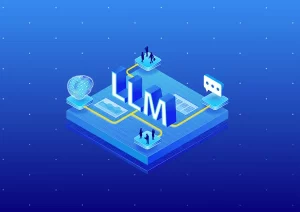Key points:
- Schools should integrate conversations around AI into professional learning opportunities
- A basic understanding of AI’s potential for learning can help educators become more comfortable using it for teaching and learning
- See related article: More students are seeking an AI-powered school year
The AI revolution is here, and educators are feeling the impact. For many, it is exciting, unsettling and overwhelming all at the same time.
The key to successfully navigating this maelstrom of emotions is to start small, break the challenge down into achievable tasks, and begin with actions that will have the most impact. This five step to-do list can help educators engage in artificial intelligence and begin using it to positively impact both teaching and learning.
1. Learn about AI.
Begin by gaining a basic understanding of artificial intelligence. Read news stories, follow the conversation on social media, and explore some of the many free resources available online. Here are a few good options to get you started.
Beyond understanding the big picture, one of the best ways to demystify artificial intelligence is to set up a free account with one of the leading generative AI chatbots (ChatGPT, Microsoft Bing Chat, Google Bard, or Claude) and start experimenting with it.
If you’re unsure where to begin, ask the chatbot for help brainstorming lesson ideas and then ask follow-up questions until you get something you can use. This hands-on experience will help you better understand generative AI tools within a practical context, and it can save you time.
2. Engage in the conversation.
Educators are the experts in teaching and learning, and they need to be at the center of conversations about how artificial intelligence will be used in education. Their input is vital in order to guide schools toward practices that will be the most beneficial to students. Questions such as these can help guide the conversation:
- What do you need to learn about AI, and how can you gain that knowledge?
- What potential benefits and challenges might AI present to teaching and learning?
- How might you need to modify current practices because of AI?
- How can you leverage AI to improve teaching and learning?
- How can you empower your students for success in an AI world?
Whenever possible, schools should integrate these conversations into professional learning opportunities and staff meetings so educators can engage with one another and collaboratively develop an action plan.
3. Teach students about it.
Today’s students will graduate into an AI world and an AI-infused workforce. To be prepared for that reality, they need to learn about it now. Several organizations have developed free instructional resources to assist teachers with this task. These materials can be especially helpful for educators who are beginning to learn about AI and may not yet feel prepared to teach it.
- The AI Education Project (aiEDU). This website offers an introduction to AI, AI Snapshots (5 minute student activities), AI challenges for students, an AI in 5 minutes primer, and even a 10 week project-based course in the project dashboard.
- Day of AI is an annual event sponsored by MIT RAISE and i2 Learning. Their website is packed with teacher-ready curriculum and activities that can be used throughout the year with students ages 5-18.
- Hands-On AI Projects for the Classroom is a guide for elective teachers from ISTE and General Motors. This document provides everything you need to implement four AI themed projects in your classroom. Projects are aligned with current ISTE standards.
4. Help students develop workforce skills.
Artificial Intelligence is impacting the workforce skills our students will need. The Future of Jobs Report 2023 from the World Economic Forum has identified the skills that companies believe will be the most important for an AI workforce.
- Analytical thinking
- Creative thinking
- Resilience, flexibility, and agility
- Motivation and self-awareness
- Curiosity and lifelong learning
- Technological literacy
To prepare students for this type of workforce, educators must design impactful learning opportunities that require the use of these AI skills. Listening to a lecture, writing notes, filling out worksheets, and taking tests will almost surely not be enough. To develop these higher order thinking and self-management skills, students will need to engage in rich learning experiences like inquiry learning, project-based learning, creative projects, and other forms of authentic problem-solving.
5. Engage students in using AI.
To fully develop their skills, students should be given the opportunity to use AI tools in your classroom. Under your guidance and with appropriate guardrails, students can develop the skills needed to use these powerful new tools. Of course, before giving students access, be sure to review school policy and the terms of use for each AI tool to determine if student use is permitted.
If your students are not allowed to use the tools themselves, consider modeling their use. If you are allowed to use an AI account at school, project it on a screen in front of the class and have students help you generate prompts, evaluate responses, and use the generated content. Even if you’re still learning yourself, engaging in the experience with your students is a great opportunity to model a growth mindset, introduce AI, and involve your students in the learning journey.
Finally, educators should identify AI tools as they and their students use them. Artificial intelligence is all around us, and students are likely already using AI tools like spell checkers, predictive text, grammar checkers, mapping programs, self-paced learning modules, and video games. Calling attention to these common applications can make the topic of AI feel less overwhelming and help students better understand the role that this transformative technology is already playing in their daily lives.
Related:
How AI could advance computer-based tutors—and student success
The future of AI in education points to holistic learning environments
!function(f,b,e,v,n,t,s)
{if(f.fbq)return;n=f.fbq=function(){n.callMethod?
n.callMethod.apply(n,arguments):n.queue.push(arguments)};
if(!f._fbq)f._fbq=n;n.push=n;n.loaded=!0;n.version=’2.0′;
n.queue=[];t=b.createElement(e);t.async=!0;
t.src=v;s=b.getElementsByTagName(e)[0];
s.parentNode.insertBefore(t,s)}(window, document,’script’,
‘https://connect.facebook.net/en_US/fbevents.js’);
fbq(‘init’, ‘6079750752134785’);
fbq(‘track’, ‘PageView’);
 NEWSLETTER
NEWSLETTER





